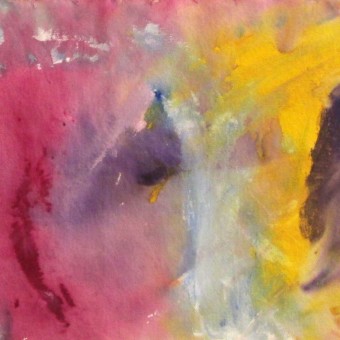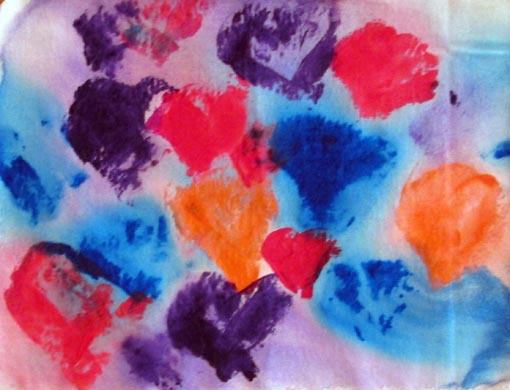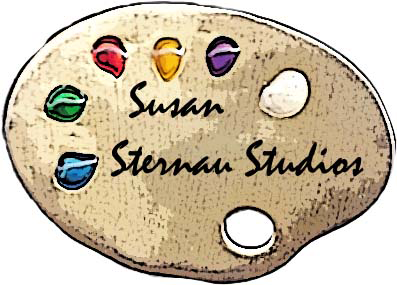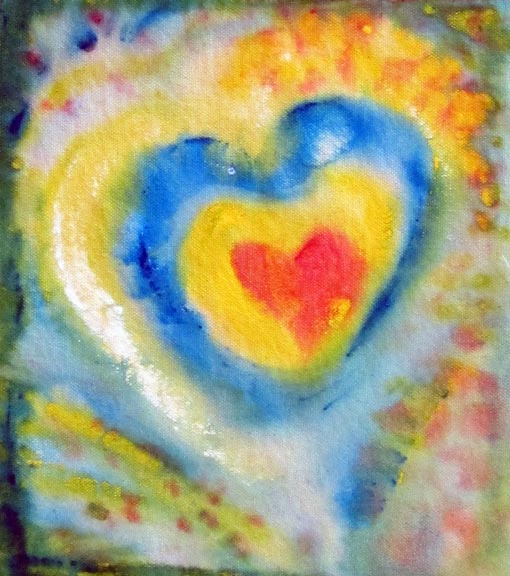Art Project
Stain Painting Surprise
Stain Painting Project
This stain painting art project encourages freedom and experimentation with color and brush-work for all ages. Results can be surprising and unexpectedly pleasing. The Acrylic Flow Release mixture can be irritating to skin and eyes, though, so caution should be used. I wear gloves when brushing the mixture on the canvas and direct students to uses brushes, not fingers. Recommended for fifth grade and up.

Stain Painting Materials you’ll need:
- Acrylic Flow Release mixed with water (Mix 1 part Acrylic Flow Release to 10-20 parts water).
- Wide mouth mixing jar with lid (a clean pasta sauce jar works well)
- ½” paint brush
- Rectangles of raw canvas (I cut up studio scraps into 9×12 and 11 x14 sizes)
- Acrylic paints
- Paint brushes
- Water jar (clean mayonnaise jar) for brushes
- Paper acrylic palette
- Plastic trash bags
Steps:
- Cover work surface with a protective layer of plastic
- Brush a rectangle of raw canvas evenly with the diluted Acrylic Flow Release mixture
- Paint freely with fairly liquid acrylic paint and watch the colors blend and flow
- Using simple shapes such as circles, hearts or rectangles to unify the composition can help with getting started.
- Put completed wet paintings aside to dry on flat plastic bag, and repeat steps.
Expect to get four or more paintings from one session!
Let paintings dry completely before handling.
Learn more about Stain Painting:
For a demonstration on this topic watch the Golden Paint YouTube video on “Working with Acrylic Flow Release on Raw Canvas.”
To see a stain painting class watch Michele Theberge’s video “Stain Painting, Part 1”
Artists to check out:
Helen Frankenthaler, an American Abstract Expressionist painter of the 1950’s. She worked with thinned oil paint on raw canvas.
Morris Louis, an American Color Field painter known for large abstract works.


